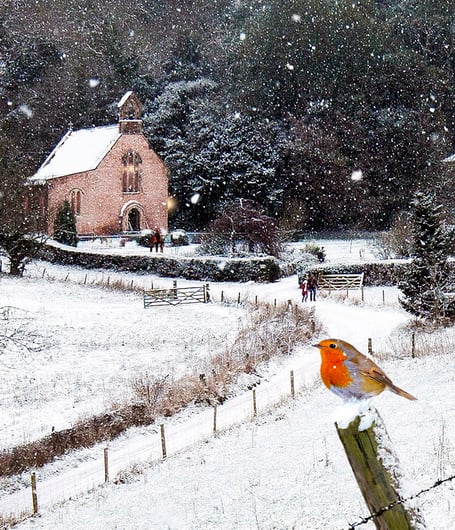'THE turning of the year is a special time for both us and the natural world.
'But the season of the shortest days and longest nights, especially when the North wind blows, can bring freezing temperatures and snow.
'For wildlife this is often the toughest time of the year.
'Many creatures adapt to the severity of the season in many different ways.
'A theme I once explored for a major BBC Christmas documentary.
'The filming took me to several different countries in midwinter, with countless challenges.
'Not least of which was in the mountainous and active volcanic landscape of Yellowstone National Park.
'A location that got my prize for being the coldest place.
'Especially when my thermometer ceased working below minus 20 degrees Celsius.
'The perils of working such low temperatures soon become obvious to those of us more used to living in the usually mild south west of England.
'It was also a painful memory, when my bare fingers stuck instantly to metal and the camera batteries died after just a few minutes of use.
'Let alone encountering hungry wolves and herds of huge bison. Wild animals survive winter in many ways. Countless birds migrate vast distances to avoid an arctic winter.
'Others, from bats to butterflies, enter a deep sleep. Indeed, so deep some are barely alive.
'One frog we found in the woodlands of North America, took it to extremes and froze solid.
'A process only possible because their blood contains an antifreeze. Hibernation is a way that animals can conserve energy to survive adverse weather. But perhaps more importantly the lack of food.
'Hibernation is more a tactic to avoid starvation than simply to escape intense cold.
'The process involves physiological changes as their body temperature drops and metabolism slows.
'In such a deep state of torpor creatures become vulnerable to predation, so must seek somewhere safe and secure to hide without disturbance.
'Other animals stay alert and adapt to the cold by growing dense fur or feathers, sometimes turning white for camouflage. But surely the cleverest of creatures take advantage of us.
'Winter is the most important time to put out peanuts, seeds and balls of fat to help wild birds survive. And the real secret to a busy bird table is regularity.
'Replenishing food and supplying tepid water at the same time every day. Usually, one of the first birds in our queue for a free lunch is the robin.
'Bright, bold and friendly, they have no doubt thrived alongside people for thousands of years.
'Indeed, the robin is perhaps the first bird that children in Britain learn to recognise and each year we seem to find more about our most familiar bird.
'The robin is one of the few birds where male and female not only look identical, but both sing equally well during winter and each hold individual territories.
'Even more interesting, new research has shown they also sing differently through the year.
'Their song becoming more melancholy over winter, then chirpier as the breeding season dawns in spring. I think we can all identify with that, so no real surprise.
'But perhaps it just makes a realise that there is not so much difference between humans and the wild creatures that surround us.'





Comments
This article has no comments yet. Be the first to leave a comment.